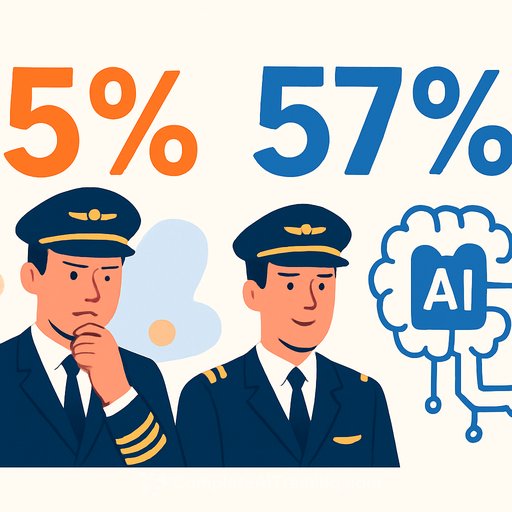Your AI Strategy Needs More Than a Single Leader
In boardrooms worldwide, a common question arises: Who should lead AI initiatives? Some companies respond by naming a chief AI officer (CAIO), expecting one person to drive rapid, enterprise-wide AI success. But this often leads to stalled projects, unmet goals, and leadership turnover.
The issue isn’t the capability of the CAIO. It’s that the role is overloaded—expected to innovate, manage operations, ensure compliance, and deliver quick wins simultaneously. That’s too much for one individual.
The Lone-Leader Trap
Many CAIOs are placed under the CTO or isolated within strategy teams, tasked with being bold but risk-averse, experimental but immediately valuable, and transformative yet operationally seamless. This conflicting mandate strains the role.
For example, a global services firm’s AI lead created a promising prototype, but without early involvement of business units or training, the tool went unused. Even in better setups, the pressure on a single leader to satisfy diverse stakeholders—legal, operations, marketing, and the board—is intense and unrealistic.
An Ecosystem Approach
Successful AI adoption requires distributed leadership. At Holmes Murphy, a commercial insurance firm, responsibility for AI-driven change is shared among senior executives (CEO, CIO, COO, chief legal officer) with deep business knowledge and a commitment to innovation.
Supporting this leadership team is a cross-functional AI Center of Excellence (COE), a small group focused on building AI expertise, tracking emerging trends, and translating AI into business value. The COE also promotes an AI mindset across the company.
Different leaders play distinct roles:
- Builders: Engineers, digital heads, or product teams experimenting with generative AI tools.
- Integrators: COOs and customer-support leaders redesigning workflows and team structures to embed AI effectively.
- Connectors: CFOs aligning investments with outcomes, general counsels managing risks, and CEOs embedding AI into organizational learning.
This doesn’t require bureaucracy. The critical factor is mindset: AI is a company-wide capability, not a single department’s task.
The CEO’s Critical Role
The CEO’s involvement is vital. They set strategy, align incentives, and influence culture. Successful AI transformation is less about technology and more about the strategic and operational shifts it enables. CEOs can’t simply delegate AI leadership—they must lead it.
Effective CEOs engage directly and authentically. A technical CEO might prototype workflows; a non-technical one might co-create processes and emphasize that AI is for everyone. For instance, at ITAGroup, the CEO and executive team actively participated in cross-functional sessions and company-wide hackathons, signaling that AI transformation belongs to all employees.
Clear, consistent communication focused on opportunity, role evolution, and human creativity is essential to keep the organization aligned and motivated.
Who Else Should Be at the Table?
Start with a builder—someone curious and energized by new ideas, such as a head of innovation or product lead. Pair that person with an operator who understands where the work happens and what problems matter most. Add a strategist who sees the big picture and aligns initiatives with long-term goals.
These leaders don’t need identical backgrounds, but they must be collaborative, curious, grounded, and comfortable with ambiguity while knowing when to focus and deliver results.
Some of the best AI champions emerge naturally through hands-on experience rather than formal appointments. Ideation sessions that demystify AI, showcase live examples, and encourage experimentation with tools like ChatGPT Pro or Claude help ignite curiosity and surface unexpected leaders who drive change by doing.
Technical expertise alone isn’t enough. As Brendan Hopper, CIO of Commonwealth Bank, notes, “Many who’ve worked longest with AI aren’t always the best to lead enterprise transformation.” Leading change requires business fluency, emotional intelligence, and the ability to engage across functions.
Jeff Maggioncalda, former CEO of Coursera, set an example by personally engaging with AI tools and launching a cross-functional AI initiative that embedded AI goals in every department. This blend of curiosity, business savvy, and change management turned isolated pilots into company-wide breakthroughs.
Designing for Durability
AI projects stall when coordination fails. A promising AI model often needs new data flows, process redesign, legal reviews, change management, and training. When these elements sit in separate silos with conflicting priorities, progress halts.
Effective AI adoption means building repeatable systems for evaluating, integrating, and scaling ideas. Clear roles are essential—who builds, who integrates, who decides. Lightweight infrastructure, centers of excellence, and working groups should connect departments rather than create barriers.
Beware common pitfalls:
- Ignoring change management: Technical skill isn’t enough; leaders must also craft narratives, negotiate risk, and upskill teams to overcome resistance.
- Gatekeeping ideas: Keeping AI planning in a small circle misses frontline insights. Open channels like idea portals and workshops help surface and refine the best suggestions.
- Misreading risks: Choosing leaders unaware of ethics, privacy, and regulatory issues risks crises that can derail AI efforts.
Lead Together, or Not at All
AI success isn’t unlocked by a single hire or leader. It requires an enterprise-wide shift with many leaders engaged and accountable. The companies that advance AI meaningfully build leadership models that are flexible, durable, and fueled by curiosity.
Hiring matters, but real progress begins when the entire leadership team leans in.
For executives looking to strengthen their AI leadership capabilities, exploring practical AI education can be a valuable step. Resources like Complete AI Training's latest courses offer actionable insights tailored for business leaders ready to drive change.
Your membership also unlocks:






